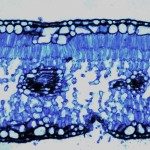Link to Pubmed [PMID] – 19213700
J. Clin. Microbiol. 2009 May;47(5):1364-71
We studied the evolution of Vibrio cholerae O1 during the 1991 to 2000 cholera epidemic in Mexico by biochemical, serological, and molecular characterization of strains collected during this period. Strains were divided into toxigenic and nontoxigenic groups according to the presence or absence of genes encoding cholera toxin. As previously reported, we characterized two populations among toxigenic strains, which were present from the first year of the epidemic. BglI rRNA analysis revealed that these strains had ribotype profiles, denoted M5 and M6 in our study, that were identical to those previously designated Koblavi B5 or Popovic 5 and Popovic 6a or Tamayo B21a, respectively. Ribotype M5 was isolated between 1991 and 1993. This ribotype had a low level of genetic variation as detected by pulsed-field gel electrophoresis (PFGE). Ribotype M6 persisted from 1991 to 2000. However, PFGE profiles suggested that two epidemiologically unrelated strains coexisted within this single ribotype from 1995 until the end of the epidemic. We identified three new BglI ribotypes, Mx1, Mx2, and Mx3, from nontoxigenic V. cholerae O1 strains isolated between 1998 and 2000; one of them grouped strains positive for the toxin-coregulated pilus island. They differed from nontoxigenic clones isolated in Latin America and on the U.S. Gulf Coast and are probably autochthonous Mexican V. cholerae O1 variants. Most of these new variants were isolated from states surrounding the Gulf of Mexico, where the highest incidence of cholera in the country was recorded. Thus, the Mexican Gulf Coast, like the U.S. Gulf Coast, may act as an environmental reservoir of V. cholerae O1.


